STONECARPET
STONE CARPET FLOOR
High chemical resistance
High mechanical resistance
High Traffic
Suitable for indoors and outdoors
Antisliding
STONECARPET (or decorative gravel flooring) is an innovative coating system designed to combine aesthetics and functionality. This system uses a blend of high-quality resins and natural stone aggregates to create durable, decorative, and non-slip surfaces. Ideal for both indoor and outdoor applications, STONECARPET ensures a unique finish capable of withstanding the demands of residential, commercial, and industrial environments.
Within the STONECARPET range, we offer three types of binder resin: STONECARPET 1C, based on acrylic resin; STONECARPET 2C EPOX, formulated with epoxy resin; and STONECARPET 2C POL, which is polyaspartic in nature. Each option is designed to meet specific needs and stands out for its unique properties and benefits.
STONECARPET RESIN 1C
STONECARPET RESIN 2C POL
STONECARPET RESIN 2C EP
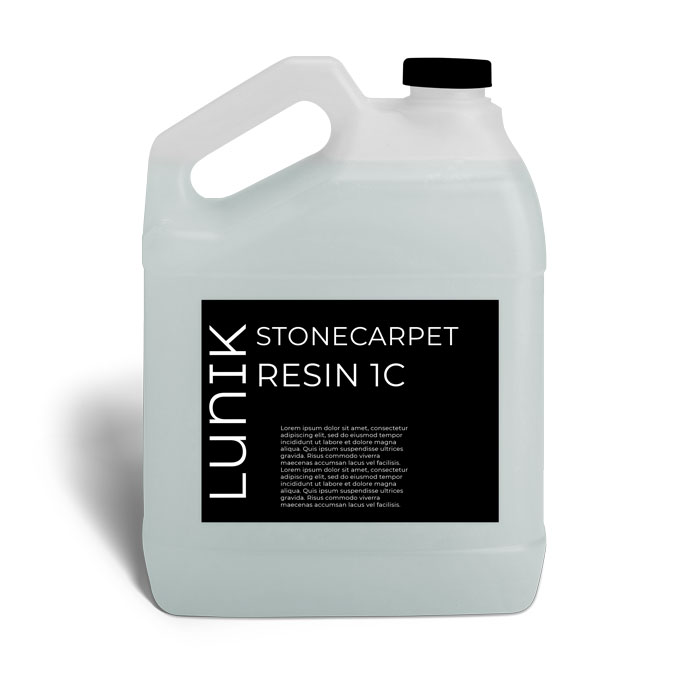
STONECARPET 1C
High mechanical strength: withstands heavy traffic without deterioration.
Durability: resistant to abrasion, impact, and weather changes.
Customizable aesthetics: available in a wide variety of colors and textures.
Slip resistance: ensures safety on wet or slippery surfaces.
Water permeability: perfect for outdoor applications requiring drainage.
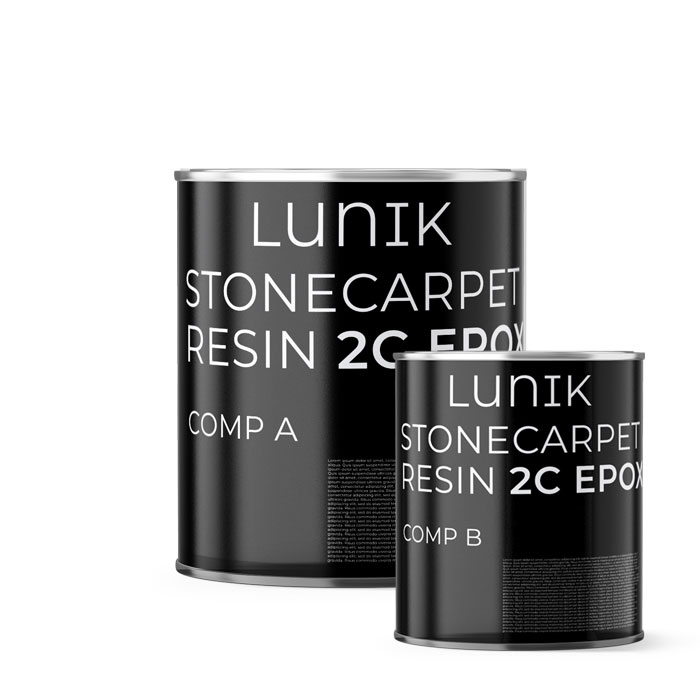
STONECARPET 2C EPOX
Belongs to the second generation of binders developed for STONECARPET.
Strength: Provides a strong and homogeneous bond between the natural stones that make up the STONECARPET.
Chemical resistance: Offers excellent performance against aggressive chemical agents.
UV resistance: High compared to other products on the market, although not total.

STONECARPET 2C POL
This is the third generation of resins, with outstanding properties and fast curing.
Superior performance: Two-component formula that ensures greater durability and strength.
Fast drying: Reduces application time and allows for almost immediate use.
Chemical resistance: Withstands oils, chemicals, and solvents without degradation.
Thermal stability: Resists both high and low temperatures without compromising its properties.
Elasticity at low temperatures: Maintains high elasticity even below 0°C.
Unaffected by water.
We have 6 types of aggregates:
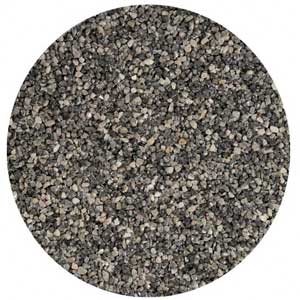
dark grey
Size: 2-6 mm
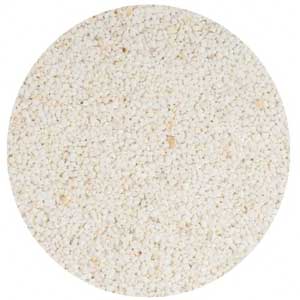
white
Size: 2-4 mm
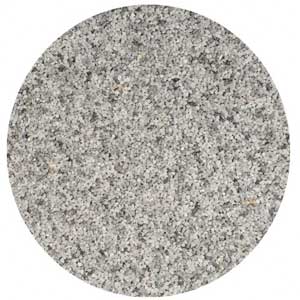
blue grey
Size: 2-6 mm
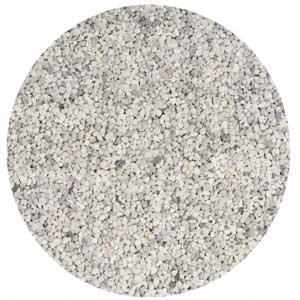
light grey
Size: 2-6 mm
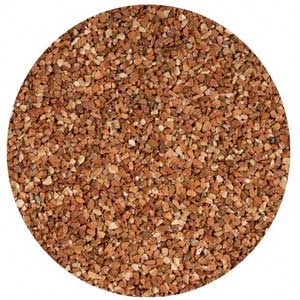
red
Size: 2-6 mm
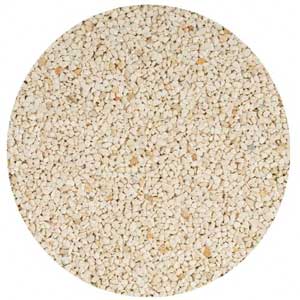
ivory
Size: 2-6 mm
APPLICATION METHOD
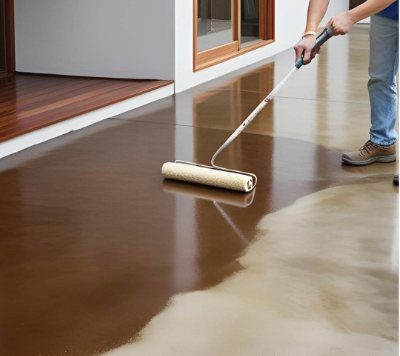
SURFACE PREPARATION
For firm or concrete surfaces:
The surface must be clean, dry, and completely free of dust, grease, or any type of contaminant. Before proceeding, any cracks or irregularities must be repaired. Then, apply a coat of PREPOX to ensure proper adhesion of the system. The primer drying time is between 12 and 24 hours, depending on ambient conditions. Apply STONECARPET within 24 hours after applying PREPOX.
For surfaces that require levelling:
Option 1: Compacted gravel only (without grid)
If the ground is not levelled but can be consolidated with a good base of compacted gravel, this may be sufficient as a substrate, as long as a firm and stable compaction is achieved. In this case a layer of gravel must be laid and mechanically compacted using a vibrating plate or roller. The STONECARPET system can then be applied directly on top.
Option 2: Use of cellular grids
Grids provide additional stability, especially in areas where good compaction is difficult or where ground movement is expected. They also help maintain the aggregate layer in place during application.
Install the grids on a compacted base layer and fill them with 5–10 mm gravel.
Then, apply STONECARPET on top.
Option 3: Double layer of STONECARPET
Also a valid option if levelling is required. A first, thicker layer of STONECARPET is used to level and stabilize the surface (with 8–10 mm aggregate size).
After curing, apply a second, thinner layer for the final finish using the STONECARPET aggregate.
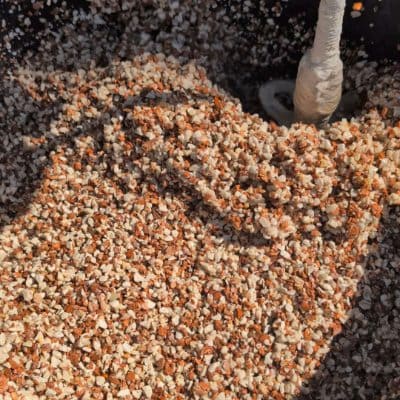
MATERIAL MIXING
Homogenization of Component A (base resin)
Before adding Component B (hardener), it is essential to thoroughly homogenize Component A to ensure an even distribution of all additives and fillers.
Use a low-speed electric mixer (300–400 rpm) with a paddle or double-blade mixing head (never a whisk-type head).
Always avoid air entrapment, as it may lead to unwanted porosity or affect surface finish.
Mixing Components A and B
Add Component B to Component A in the ratio indicated in the technical data sheet.
Mix both components thoroughly for 2 to 3 minutes, making sure there are no unmixed residues on the sides or bottom of the container.
It is important to maintain low speed throughout the process.
Incorporation of aggregates
Once the resin mix is homogeneous, gradually add the aggregates in small batches while continuing to mix.
Ensure that the entire mineral load is fully impregnated with resin, with no dry areas or clumps.
The standard ratio is 1 part resin to 12–15 parts aggregate by weight (1:15), although this can be slightly adjusted depending on the type of aggregate and application conditions.
The full mixing process can be carried out in a planetary mixer or a vertical-axis concrete mixer for larger volumes.
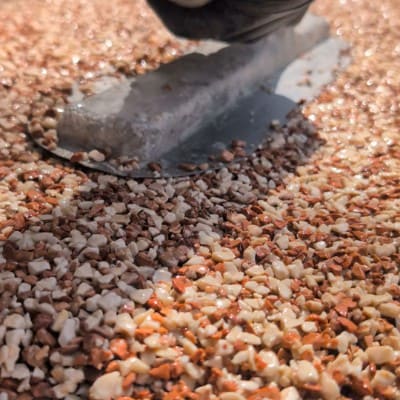
COATING APPLICATION
Once mixing is complete, the blend must be applied immediately, as the pot life is limited and may be significantly shortened under high ambient temperatures.
It is essential not to leave the mixture sitting in the container, as this accelerates the chemical reaction (curing) and may lead to undesirable heat buildup, reducing the product’s workability.
Material spreading
Pour the mix directly onto the previously primed or prepared surface.
Spread the material evenly using suitable tools, such as metal trowels, stainless steel smoothing blades, or leveling rollers.
It is recommended to work in continuous sections to avoid cold joints and ensure a visually uniform finish.
Compacting and smoothing
During application, lightly compact the mix by applying pressure with the trowel to ensure proper bonding of the aggregates and good adhesion to the substrate.
Smooth the surface uniformly, eliminating air bubbles and avoiding loose or unevenly distributed stones.
For a better finish and to prevent resin from sticking to the tools, the trowel may be sprayed with a release agent (such as isopropyl alcohol or a specific compatible mold release).
Working times
The mixture must be applied and worked before it begins to cure (pot life), which ranges from 15 to 30 minutes for 2C POL, and 45 to 50 minutes for 2C EPOX, depending on ambient temperature and humidity. 1C has no working time limitation as long as the container remains sealed.
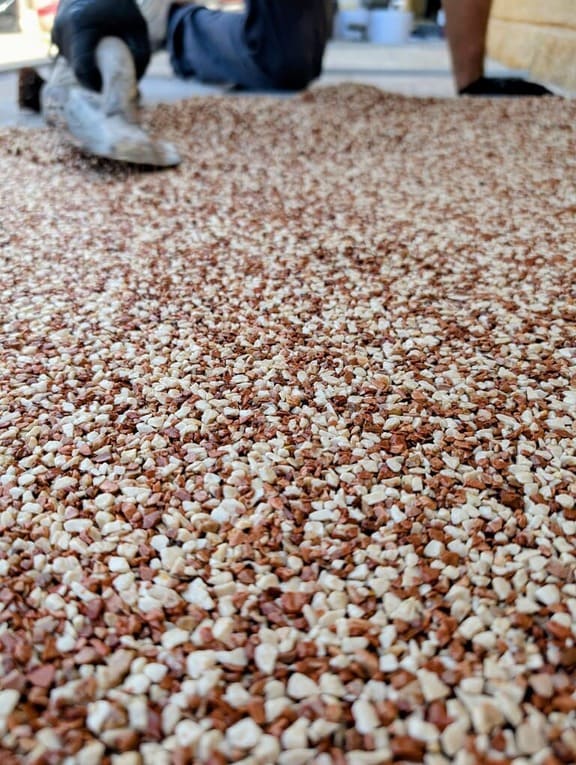
STONECARPET VERTICAL
The STONECARPET vertical system allows vertical surfaces to be coated while preserving the natural aesthetic of the system on walls, skirting boards, or furniture. For this purpose, STONECARPET 2C POL WALL is used — a resin specially formulated for both priming and binding the aggregate.
Substrate preparation
The substrate must be dry, sound, and free of dust, grease, or loose particles. On very smooth or closed surfaces, prior sanding or pore opening is recommended to improve adhesion.
Mixing
STONECARPET 2C POL WALL resin (components A + B) should be mixed using a low-speed mixer to avoid air bubbles.
Priming
A first coat of STONECARPET 2C POL WALL is applied as a primer using a spatula.
Vertical application
Dry aggregate is mixed with the prepared resin (A + B) at a ratio of approximately 17:1 by weight. Once a homogeneous mix is obtained, it is applied onto the primed surface using a metal trowel, applying firm pressure to ensure proper compaction and prevent sagging — especially important in vertical applications.
It is essential to keep tools lightly moistened with solvent during application (using a solvent-soaked cloth) to prevent the resin from sticking to the trowel and to ensure a clean application.
It is recommended to work in small sections to maintain better control and ensure a uniform finish across the entire surface.